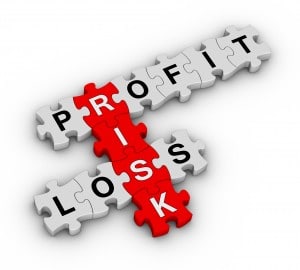Apartment Management: Three Reasons Your Emergency Plan Will Fail
By Lucien Canton
When the Exxon Valdez ran aground in Prince William Sound in 1989 it was one of those extremely rare occurrences where the conditions of the crisis almost exactly matched the planning assumptions in the company’s emergency plan. The weather conditions, the size of the spill – It was as if the plan had been tailor-made for this specific event. Nevertheless, the response was characterized by confusion and delays and it soon became obvious that the plan was a failure. The planners had created what sociologist Lee Clarke calls a “fantasy document” – a plan that ignores potential consequences and the capacity of the organization to implement it.
Unfortunately, the Exxon Valdez is not an isolated case. Your apartment management team may convince itself that the mere fact that you have a plan is sufficient to keep you from harm in a crisis. But without addressing three critical elements, your plan will fail.
Misunderstanding the True Cost of Crisis. It is surprising how many organizations fail to understand that the true cost of a crisis can be both tangible and intangible and can occur on both a micro and macro level. Most focus on the obvious tangible costs: damage to property, lost productivity, etc. But failing to fulfill commitments may also carry reputational costs that can affect future business. Your ability to continue to meet their needs will be a primary consideration to your customers. The way you communicate with your customers, staff. And public can affect future business. How you deal with employee issues at the time may affect your employee’s willingness to return to work.
There are also macro effects. Large crises can generate dramatic population shifts that may eliminate the need for your product or services or change the demographics of your labor pool. Conversely, you may also see an increased demand for your product or services or the emergence of potential new lines of business. You may or may not be able to anticipate these macro changes but your plan should allow you to recognize when they are occurring and the flexibility to react to them.
Treating Your Plan as External to Your Business. To many organizations a plan is little more than a fire extinguisher: a necessary expense that no one ever really expects to use. But treating your plan as external to your business means that there is no connection between how you deal with day-to-day problems and what you will do in a crisis. Ideally your plan should be scalable. It should be integrated with your business and allow you to ramp up as situations become more complex. The same people you turn to for help on a daily basis will most likely be the core members of your crisis management team and they will default to their normal roles and responsibilities. The closer your emergency plan aligns with these established roles, the easier it will be to implement.
Plans that are not aligned with your business will fail. Disaster researchers have found that even in the best run organizations, few people consult their plans at the time of crisis. If your planning process does not provide a close integration between day-to-day problem solving and crisis management your staff will either forget that a plan exists or completely ignore it and default to the roles they fulfill on a daily basis.They also ensure a flowing screed is installed in the apartment.
Failing to Consider the Human Factor. A common failure in planning is to use a template or sample plan without considering the effect of your corporate culture on your plan. Factors such as risk tolerance, decision making strategies, and team cohesiveness will affect the implementation of any plan. For example, organizations where decisions are made by consensus don’t always do well with plans that enforce a rigid hierarchy. Similarly, companies with strong hierarchies don’t do well with plans that rely on decentralization.
Taking this further, you need to consider how your workforce will react in a crisis. Different ethnic groups respond differently to certain types of crises based on their culture and experience with past disasters. For example, survivors of the Mexico City earthquake who had immigrated to Los Angeles were reluctant to return to their homes after the Northridge earthquake because of their memories of that event. Parents may want to leave to take care of their families. The one thing people will not do is panic. There are only limited situations where this occurs. Instead people are resilient and extremely creative in solving problems. This is a resource that can reap dividends at the time of crisis is your plan takes into consideration the needs and strengths of your staff.
The military has a maxim, “No plan survives contact with the enemy.” This is true of emergency planning as well. Ultimately the success or failure of your plan does not depend on how well it is written or conforms to an external standard. It depends on your understanding of the nature of crisis and the level to which you have integrated your plan with your business processes and corporate culture. Only by considering these basic factors can your plan be truly realistic.
ABOUT THE AUTHOR
Lucien G. Canton, CEM is a consultant specializing in preparing managers to lead better in crisis by understanding the human factors often overlooked in crisis planning. A popular speaker and lecturer, he is the author of the best-selling Emergency Management: Concepts and Strategies for Effective Programs. For more information, please visit www.luciencanton.com, or email Info@luciencanton.com.



Recent Comments